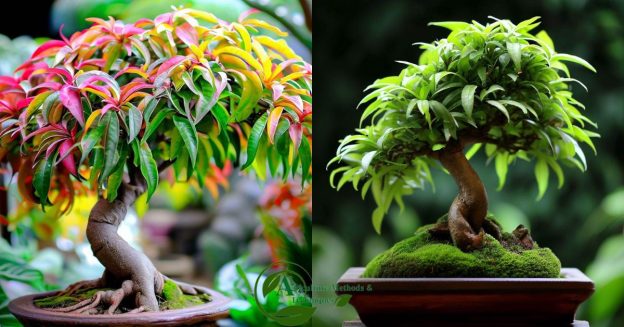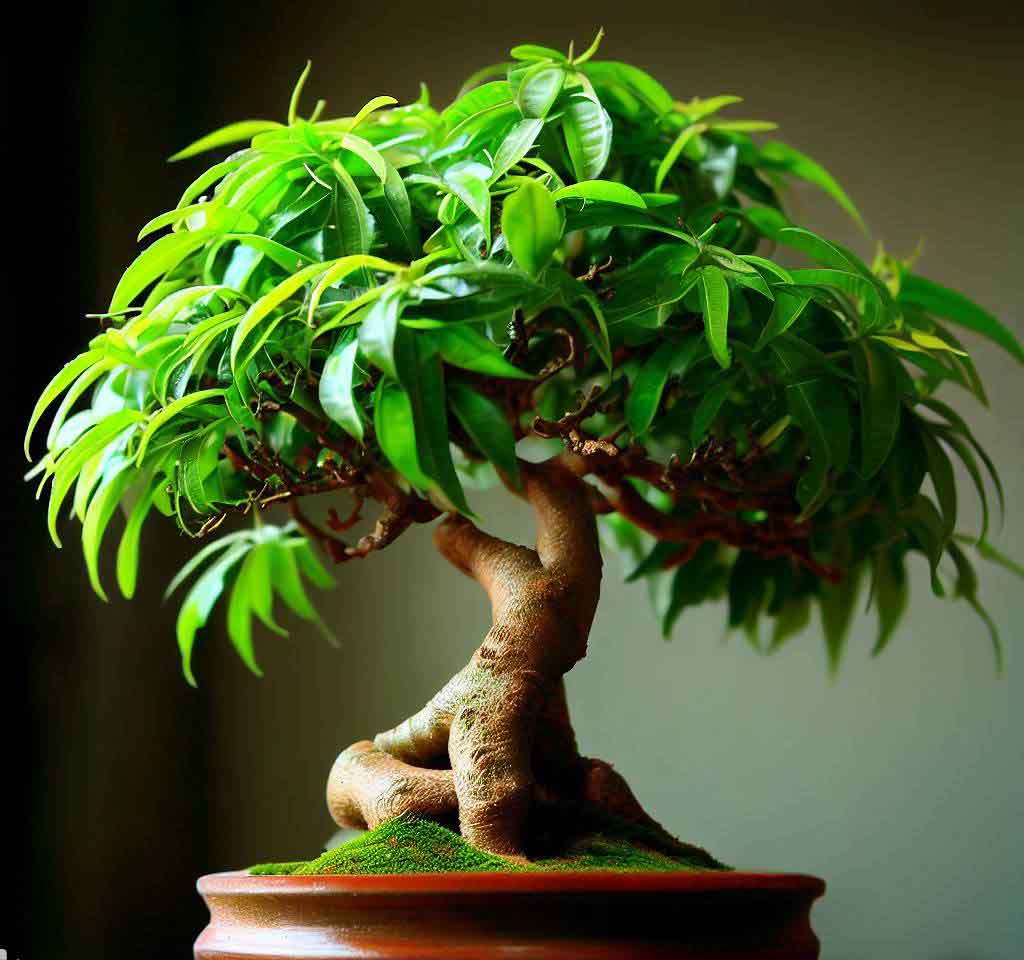Welcome, fellow gardening enthusiasts! Are you ready to embark on a whimsical journey into the captivating world of bonsai? Well, hold onto your pruning shears because today, we’re diving headfirst into the art of creating a bonsai mango tree. Yes, you heard that right—bonsai mango madness awaits!
So, grab your green thumb, and let’s get started on this fruity adventure.
Step-by-Step Guide for How to Make a Bonsai Mango Tree
Step 1: Picking the Perfect Mango Sapling:
Before we can unleash our bonsai powers, we need a mango sapling that’s up for the challenge. Seek out a young mango tree from a nursery or reputable supplier, preferably around one to three years old.
Look for a sapling with a robust trunk, healthy foliage, and a good personality (okay, maybe not the personality part, but you get the idea).
Step 2: Potting with Precision:
Now that we have our mango sapling, it’s time to give it a cozy home. Choose a bonsai pot that accommodates the size of your sapling, leaving some room for growth.
Pro tip: Go for a shallow pool with adequate drainage holes to ensure proper water flow—our little mango buddy doesn’t like soggy feet.
Step 3: Pruning like a Pro:
Here comes the fun part—pruning! Just imagine yourself as a bonsai ninja skillfully wielding your shears. Start by trimming away unwanted branches, focusing on achieving a balanced and aesthetically pleasing shape.
Be patient and don’t go overboard; remember, we want our mango tree to be a miniature version of its grand self.
Step 4: Wiring for Wonder:
To add some bonsai magic, we’ll gently use wire to shape our mango tree. Wrap the wire around selected branches, carefully bending them to create graceful curves. Don’t go ninja warrior on your tree—be gentle and avoid causing harm. After a few months, remove the wire to let nature take its course.
Step 5: Nutrients and TLC:
Our bonsai tree needs some love and nourishment to thrive. Provide it with a balanced fertilizer during the growing season, following the instructions on the package.
Regularly check the soil’s moisture level, ensuring it remains moist but not soggy. And don’t forget to talk to your bonsai—flattering compliments might boost its growth (well, maybe not scientifically proven, but it can’t hurt!
Step 6: Sun, Shine, and Time:
Mango trees are sun worshipers, so make sure your bonsai buddy gets plenty of sunshine—around 6 to 8 hours a day is ideal. Please place it in a sunny spot, such as a windowsill or patio, where it can soak up those rays. And remember, patience is vital in the bonsai world. Watch your tree grow, thrive, and marvel at the miniature mango wonder you’ve created.
FAQs
Can any mango tree be used for bonsai?
Not all mango varieties are suitable for bonsai cultivation. It would help if you chose a dwarf or semi-dwarf variety that can produce fruits in a small space.
Some of the best mango varieties for bonsai creation include Irwin, Nam Doc Mai, King Thai, Carrie, Coggeshall, Neelam, Glenn, and Amrapali,1
How long does a bonsai mango tree take to bear fruit?
A mango tree takes a long time to bear fruit; maybe more than ten years is needed. But it can be taken just 3~5 years by graft. Typically, most mango trees are in 2.
What are the best pruning techniques for maintaining the bonsai shape?
Maintaining the shape of a bonsai tree is essential, and pruning is a vital part of that. Remove dead branches that block air and sunlight to keep your tree looking good. If you prune too heavily, it can reduce fruiting. For deciduous trees, trimming above a node encourages branching.
For evergreens, remove new shoots where they meet an outward-facing branch. To give your tree a unique look, prune larger branches. Deciding what to keep and what to remove is important because it must be done.
How often should I fertilize my bonsai mango tree?
For a healthy bonsai mango tree, fertilize it regularly with a balanced, water-soluble fertilizer designed for bonsai. Adjust the dosage and frequency based on the tree’s growth and health. During the growth season, fertilize frequently, but be careful not to over-fertilize.
Can a bonsai mango tree be grown indoors or require outdoor conditions?
Mango bonsai trees need 6 hours of direct sunlight daily. Protect from harsh winds and extreme temperatures. They can be grown in containers. Use dark-colored containers to create a more favorable environment for growth. Ensure enough space for drainage. Mango bonsai trees can be grown indoors or outdoors.
Conclusion:
Congratulations, bonsai enthusiast! You’ve completed your bonsai mango tree journey and are now the proud parent of a charming, miniaturized mango masterpiece. With a bit of creativity, patience, and a touch of ninja flair, you’ve successfully tamed the wild spirit of a mango tree and transformed it into a work of art. So, share your bonsai adventures, and let the bonsai mango madness spread far and wide!
Remember, the possibilities are endless in the bonsai world; the only limit is your imagination. Happy bonsai-ing!
I am Gaushoul Agam
𝐂𝐨-𝐅𝐨𝐮𝐧𝐝𝐞𝐫 & 𝐂𝐄𝐎
ToAgriculture
I am an experienced Horticulture Officer in the Department of Agricultural Extension in Bangladesh. I am committed to improving agriculture and farming.
I created ToAgriculture to address global food safety concerns. These concerns are caused by a growing population, diminishing farmland, and the impact of climate change on agriculture. I assist readers in learning modern farming techniques.
I also help them control pests and diseases. Additionally, I guide managing agriculture sustainably. All of this is aimed at creating a better and more successful future in farming.
I have experience in field crops and horticulture crops. I know about fruit and vegetable farming, managing pests and diseases, irrigation, and grafting. Come with me as I share my knowledge and experiences to help you create a better future.

